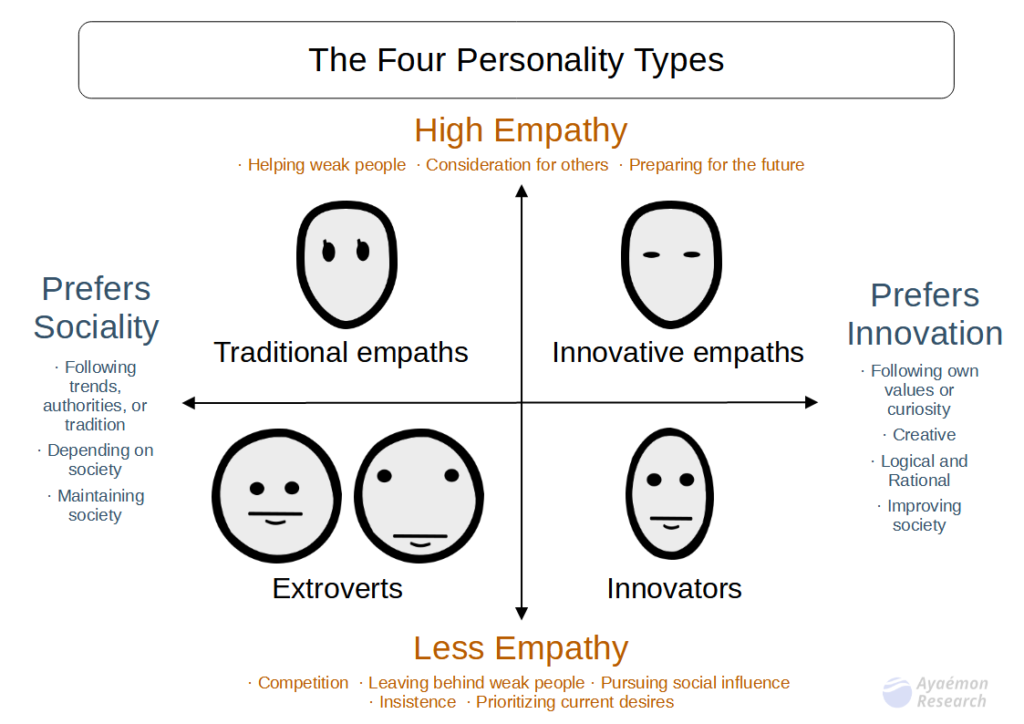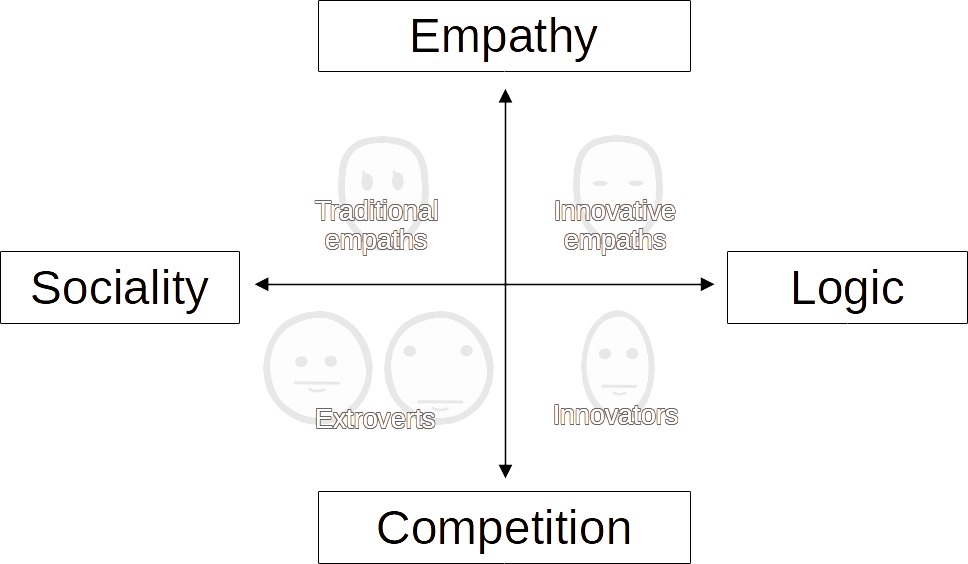Recently, I have talked about meditation. Today, we will focus on logical meditation, which is one of the styles of meditation. That might give us a new idea or a solution.
How to get a new idea
Sometimes, we want a new idea to make our lives better. We often feel the limitation of our thoughts because our consciousness can only think of what we know. In other words, we want new unconscious factors that allow us to view our situations from a new perspective.
In such a case, logical meditation would work well.

There are three styles of meditation: physical, empathic, and logical, as I mentioned in an earlier post (this article).
They are different in that different factors trigger each meditation. For example, in physical meditation, comfortable exercise clears our minds. In empathic meditation, feeling beautiful nature makes us relax and forget our small worries. In logical meditation, thinking about our creation calms down our mental state.
What is logical meditation?
However, we often don’t know how to use logical meditation efficiently. Perhaps that is the most hard-to-understand one.
The most common misconception of logical meditation may be that it appears to be thinking. Meditation is a way to make our consciousness empty. On the other hand, logical thinking gives us the impression that we are thinking hard and using consciousness a lot.

Perhaps that misunderstanding is one of the reasons we cannot have a new idea or a solution.
Today, I will talk about the mental system of logical meditation. Logical meditation is not thinking. It is a way to gain awareness. That wisdom might give us a new idea or a solution.
The four types of personalities
To explain the logic, let me introduce the four types of personalities that I often use, as shown in the following image:

We classify our personalities by two axes. One axis is highly or less empathic. The other is whether they prefer social traditions or innovation.
The four kinds of sense
In other words, we could have four kinds of sense: competition, sociality, empathy, and logic. It is as shown in the following image:

An explanation of each personality
There are four types of personalities, as follows:
- Extroverts: (Not in use this time.)
- Traditional empaths: People who can naturally use physical and empathic meditation.
- Innovative empaths: People who can naturally use all three types of meditation: physical, empathic, and logical. People who need meditation the most.
- Innovators: People who can naturally use physical and logical meditation.
Assume we are innovative empaths in this article. Let’s take a deeper look at the mental system of logical meditation.
Logical meditation is a way to gain awareness
Logical meditation is not thinking. It is a way to gain awareness. This is the key to understanding logical meditation.
Perhaps an example will make it easier to understand.

Let’s imagine this situation: We drifted during a boat trip. Unfortunately, our ship was broken and swept away on an uninhabited island. It is an emergency. Many passengers around us are confused and upset.
Innovative empaths—the coolest personality
By the way, innovative empaths are the ones who can keep cool the most in such a situation. Although we are surprised by the accident, we quickly calm down and regain our thinking ability.
Innovators and traditional empaths can be calmer than extroverts. Innovators can assume the situation. Traditional empaths can have the mental capacity to help weak people.

However, they both cannot cool down as innovative empaths. That is because they have less empathy or logical sense. Innovators tend to act impulsively without considering weak people. Traditional empaths cannot understand the situation.
Innovative empaths can become calm due to their empathy and logical sense. They can estimate the situation while considering weak people. People’s sadness or confused emotions make them cool down and think of a breakthrough. In other words, they are the people who excel at crisis response.
The ideas that our inner minds tell us
In this situation, we think a lot: “What happened?” “Why did it occur?” “What caused this?” “What to do now?” “When will rescue come?” “What resources do I have to survive on this island until the rescue comes?” or “How do I manage those resources?”
Those questions are not thinking, although they look like thinking. That is because we cannot think about what we are unaware of.

The question of “What happened?” was not in our consciousness until we realized it. It was not our consciousness that brought up that doubt. Our subconsciousness gave us it.
That awareness allows us to think consciously. For example, we consciously pay attention to what has changed. We might find the engine compartment is smoking and the boat is standing on the beach. That allows us to deduce that we are drifting. In other words, we get a new idea.
The voice of subconsciousness
That is why I call logical meditation one style of meditation. It is not thinking. It is a process of awareness caused by our subconsciousness.
When we think logically, we always eliminate distractions and concentrate on our inner minds. At that moment, we have empty minds. In other words, we cannot be logical without meditation.
Try imagining the situation in which we are creating logic. For example, try paying attention to our mental states when prioritizing what to do on the next holiday. Making ordering or prioritizing is a form of logical thinking.
At that moment, we cross our arms, put our hands on our chins, ask ourselves, “What am I going to do next holiday?” and empty our minds. Right after that question, we naturally meditate to receive the answer from our subconsciousness.

Our subconsciousness might answer, “The movie that I bought last week but have not watched yet.” That process is not thinking consciously. It is questioning our subconscious minds.
That is the mental system of logical meditation. It is not thinking. After we receive the answers from subconsciousness, we begin to think consciously.
If I describe it with the words that traditional empaths prefer, we have gained wisdom from the gods inside us or our deep subconsciousness. It may look like conversing with a spirit. However, it is not a mysterious phenomenon. It is the same as getting ideas of “What happened?” or “What is wrong?” in an emergency.
The variations of “inner voices”
There are many variations in such “inner voices.” For example, it could be a keyword, a fragment of imagination, a piece of emotion, or a physical reaction. Sometimes, it could be a sound or smell. The tendency might depend on the person. When someone feels something is wrong, he might feel it by the keyword “strange” or chilling down his skin.
In my case, it is often chaos but a sequence of senses. A word brings an imagination, and the imagination leads to another word. That sequence brings me new concepts.

When I get ideas for this blog, it is usually the sequence of words. I “listen” to words like music. I seldom have physical reactions or smells. Perhaps this is a place where there is individuality.
The element of practicing logical meditation
When we worry about something, we tend to think consciously without using subconsciousness. There is no new idea because we cannot realize unaware elements. That is why we keep worrying.
Heading in the appropriate direction makes logical meditation possible.

In other words, we cannot consciously practice logical meditation. Natural life allows us to meditate.
If we begin to move in our direction, in the direction of independence, new ideas will emerge gradually.
Conclusion
That is the mental system of logical meditation. Logical meditation is a way to gain awareness. It is not thinking.
That is why I call it “logical meditation.”
That wisdom might give us a new idea or a solution.
Thank you for reading this article. I hope to see you in the next one.


